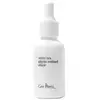What's inside
What's inside
 Key Ingredients
Key Ingredients

 Benefits
Benefits

 Concerns
Concerns

No concerns
 Ingredients Side-by-side
Ingredients Side-by-side

Water
Skin ConditioningGlycerin
HumectantNiacinamide
SmoothingPentylene Glycol
Skin ConditioningPanthenol
Skin ConditioningPantolactone
HumectantAminopropanol
Sodium Hyaluronate
HumectantAcacia Senegal Gum
MaskingXanthan Gum
EmulsifyingCocoyl Proline
Skin ConditioningCamellia Sinensis Leaf Extract
AntimicrobialBakuchiol
AntimicrobialResveratrol
AntioxidantLactic Acid
BufferingGluconolactone
Skin ConditioningCopper Gluconate
Skin ConditioningThioctic Acid
AntioxidantGlyceryl Caprylate
EmollientSqualane
EmollientSodium Hydroxide
BufferingCalcium Gluconate
HumectantHydroxyacetophenone
AntioxidantSodium Benzoate
MaskingWater, Glycerin, Niacinamide, Pentylene Glycol, Panthenol, Pantolactone, Aminopropanol, Sodium Hyaluronate, Acacia Senegal Gum, Xanthan Gum, Cocoyl Proline, Camellia Sinensis Leaf Extract, Bakuchiol, Resveratrol, Lactic Acid, Gluconolactone, Copper Gluconate, Thioctic Acid, Glyceryl Caprylate, Squalane, Sodium Hydroxide, Calcium Gluconate, Hydroxyacetophenone, Sodium Benzoate
 Reviews
Reviews

Ingredients Explained
These ingredients are found in both products.
Ingredients higher up in an ingredient list are typically present in a larger amount.
Glycerin is already naturally found in your skin. It helps moisturize and protect your skin.
A study from 2016 found glycerin to be more effective as a humectant than AHAs and hyaluronic acid.
As a humectant, it helps the skin stay hydrated by pulling moisture to your skin. The low molecular weight of glycerin allows it to pull moisture into the deeper layers of your skin.
Hydrated skin improves your skin barrier; Your skin barrier helps protect against irritants and bacteria.
Glycerin has also been found to have antimicrobial and antiviral properties. Due to these properties, glycerin is often used in wound and burn treatments.
In cosmetics, glycerin is usually derived from plants such as soybean or palm. However, it can also be sourced from animals, such as tallow or animal fat.
This ingredient is organic, colorless, odorless, and non-toxic.
Glycerin is the name for this ingredient in American English. British English uses Glycerol/Glycerine.
Learn more about GlycerinSodium Hyaluronate is hyaluronic acid's salt form. It is commonly derived from the sodium salt of hyaluronic acid.
Like hyaluronic acid, it is great at holding water and acts as a humectant. This makes it a great skin hydrating ingredient.
Sodium Hyaluronate is naturally occurring in our bodies and is mostly found in eye fluid and joints.
These are some other common types of Hyaluronic Acid:
Learn more about Sodium HyaluronateSodium Hydroxide is also known as lye or caustic soda. It is used to adjust the pH of products; many ingredients require a specific pH to be effective.
In small amounts, sodium hydroxide is considered safe to use. However, large amounts may cause chemical burns due to its high alkaline.
Your skin has a natural pH and acid mantle. This acid mantle helps prevent harmful bacteria from breaking through. The acid mantle also helps keep your skin hydrated.
"Alkaline" refers to a high pH level. A low pH level would be considered acidic.
Learn more about Sodium HydroxideWater. It's the most common cosmetic ingredient of all. You'll usually see it at the top of ingredient lists, meaning that it makes up the largest part of the product.
So why is it so popular? Water most often acts as a solvent - this means that it helps dissolve other ingredients into the formulation.
You'll also recognize water as that liquid we all need to stay alive. If you see this, drink a glass of water. Stay hydrated!
Learn more about Water